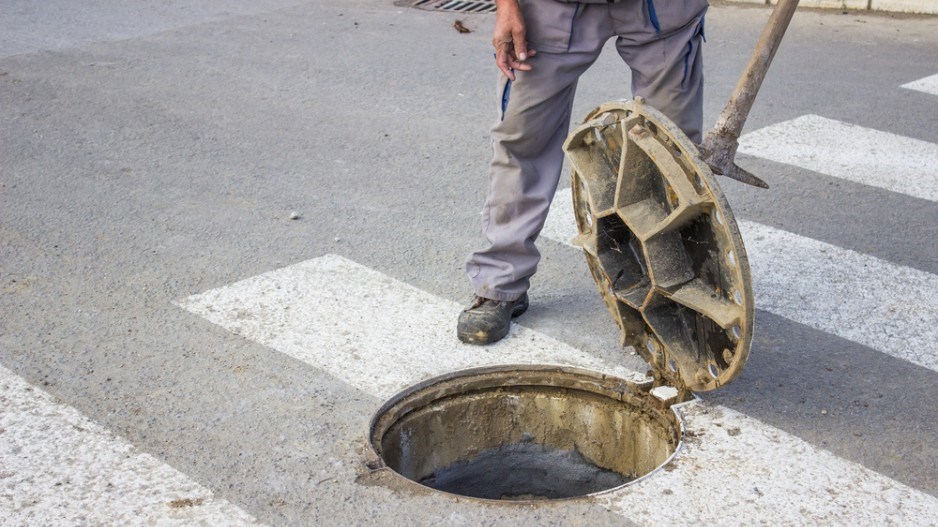By Peter Ladner
Amid all the excitement about the Christmas bounty of infrastructure spending coming at us from our deficit-happy new federal government, it’s a good time to ask how we got ourselves into this infrastructure hole.
The Federation of Canadian Municipalities (FCM) has made an art form out of asking the feds for more money, but even if its numbers might be inflated, its estimate of a $123 billion national infrastructure deficit is a massive number. “For 25 years,” says an FCM statement, “Canadians have watched the symptoms of the infrastructure deficit grow: rusting bridges, crumbling roads, crowded buses and subways, and thousands of drinking water warnings.”
This is like the strata equivalent of a massive cash call to fix a leaky roof the strata council had to have known would need replacing. How could we not have known?
Charles Marohn, the Republican civil engineer behind the U.S. Strong Towns movement, has an answer. He likens traditional suburban development to a Ponzi scheme. Tax revenues from low-density development don’t come near paying for maintenance and depreciation on costly infrastructure. He estimates suburban property taxes bring in only $0.04 to $0.65 for every dollar of liability. So cities embrace new developments to keep their cash flowing, or they go into debt, or both. At every stage, they pile on future liabilities. After a while, the infrastructure deficit reaches $123 billion.
“When people say we’re living beyond our means, they’re usually talking about a 40-inch TV instead of a 20-inch TV,” Marohn told Time magazine. “This is like pennies compared to the dollars we’ve spent on the way we’ve arranged ourselves across the landscape.” Municipal servicing costs in low-density sprawl can be 2.5 times those in compact, high-density neighbourhoods.
The other missing piece in our infrastructure management is measuring, managing and financing the services we get “free” from nature. When New York City backed off a proposed multibillion-dollar water treatment plant in favour of expanding its natural watershed and letting trees and soil purify its water, it saved billions of dollars. Yet most infrastructure spending favours replacing stormwater pipes rather than expanding wetlands and watersheds.
Look at what we get from urban trees. The David Suzuki Foundation (DSF) calculated that adding 10 trees to a city block can produce health benefits equivalent to a resident getting a $10,000 salary raise or being seven years younger. Trees freshen air, filter water, reduce stormwater runoff, lower temperatures and save energy. Will planting urban trees be eligible for federal infrastructure funds? It should be.
We can look to the Sunshine Coast community of Gibsons for a way to make that happen. It’s the first municipality in North America, maybe in the world, to adopt an asset management policy that recognizes natural assets on par with engineered assets. Led by chief administrative officer Emanuel Machado, it’s working on determining the replacement, maintenance and monitoring costs of ecosystem services (like wetland and forest water storage and purification) that mimic built infrastructure (like water treatment plants).
What are these ecosystem services worth? DSF estimated the economic value of the services provided by the Lower Mainland’s wetlands and natural coastal areas – providing a carbon sink, reducing greenhouse gas emissions and providing protection from extreme storms, not to mention enhancing biodiversity – at $30 billion to $60 billion a year.
This “natural capital” can provide high-quality services at a fraction of the cost of built capital. In addition, to the bafflement of traditional accounting practitioners, assets like trees appreciate in value, compared to pipes that start deteriorating the day they’re installed.
The only way to keep from adding to that grotesque $123 billion infrastructure deficit is to stop making the mistakes that got us here in the first place. That means getting natural capital onto the books and into the mix.
In the U.S., all applications for federal funding now have to include natural capital – it’s far cheaper to preserve mangrove swamps than to build levees for flood protection.
Peter Ladner ([email protected]) is a founder of Business in Vancouver.
To comment on this article, visit here.




